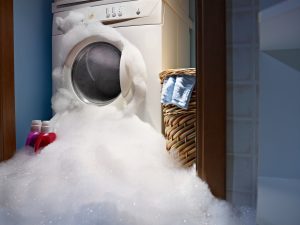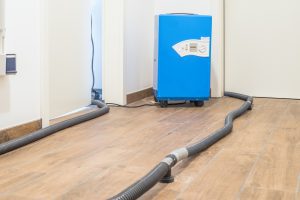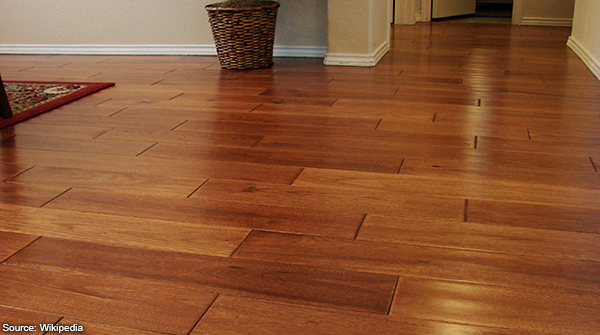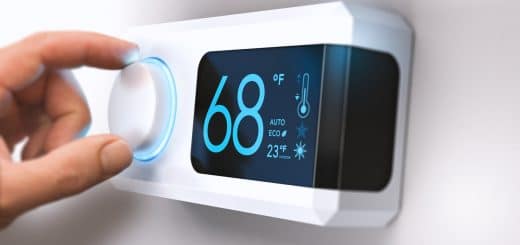7 Ways to Pay for Emergency Home Repairs
Budgeting for emergency home repairs is good practice. Homeowners can expect to shell out a few hundred dollars or more to repairRepair is the act of fixing or restoring damaged property, m... More or replace unexpected household issues.
Appliance Malfunctions

Be sure to call a restorationRestoration is the process of returning a property to its pr... More company right away for any significant damage caused to your home.
The water heater is notorious for suddenly leaking or completely bursting within its ten-year lifespan. A new water heater can put homeowners back $300 to $900, plus $250 for installation. A new roof is another example of an unanticipated home repairRepair is the act of fixing or restoring damaged property, m... More. Most homeowners put off inspecting the roof until it starts to leak. By the time the leak is noticed, significant structural damage is likely to have occurred, meaning pricier fixes. Depending on the size of the property, a new roof can cost anywhere from $5,000 to $12,000.
The AC unit typically lasts decades. When it fails in the middle of a summer heat wave, homeowners will want to replace it immediately. A new air conditioning unit has the price tag of $5,210. In the same vein, a broken furnace in the dead of winter can be replaced at the cost of $3,865.
Paying for emergency repairs takes a big chomp out of homeowners’ wallets. Fortunately, homeowners have several funding options to return their home to the status quo.
1. Home Equity Line of Credit
A HELOC allows homeowners to take out a loan to finance home repairs. The amount of equity in a home determines the HELOC limit. Over 20 percent equity can qualify homeowners for a HELOC. The term of the loan is usually 5 to 10 years, and the interest is only paid on the dollar amount used.
Homeowners can determine the total loan amount they’ll require from a HELOC by figuring the estimated costs of home repairs. A leaky toilet can be replaced for $411 to $595. A burst water pipe has a repairRepair is the act of fixing or restoring damaged property, m... More price tag of $900 to $1,000. Water damage repairs on average cost up to $1,170.
Once a homeowner calculates the cost of repairs, the amount needed from a HELOC can be determined. In the above example, a homeowner might request up to $3,000 from a HELOC. Be advised that a HELOC typically comes with an adjustable rate. A HELOC is not right for everyone, especially for those who are averse to rising interest rates.
2. Homeowner’s Insurance
Homeowners should be familiar with what their homeowner’s insuranceHomeowner’s insurance is a policy that provides financial ... More covers. FloodingFlooding is the overflow or accumulation of water in areas t... More is rarely covered by homeowner’s insuranceHomeowner’s insurance is a policy that provides financial ... More; rather, flood insurance must be purchased separately through the National Flood Insurance Program.
Routine wear and tear is not often covered by insurance. So, if the heater or AC unit fails due to being in operation over several years, insurance will not cover the repairs. On the other hand, the unanticipated burst of plumbing pipes are covered by insurance.
Questions about coverage, limitations and restrictions should be addressed to the insurance agent.
3. Title I Loans
Government loan programs allow homeowners to pay for home repairs. Homeowners with little equity in their home can quality for a Title I Property Improvement Loan Program, offered through the Department of Housing and Urban Development. Loans from the HUD should only be utilized for various home repairs and improvements that make the home more livable or improve the property’s utility.
In addition, low-income rural homeowners benefit from home repairRepair is the act of fixing or restoring damaged property, m... More programs from the US Department of Agriculture.
4. FEMA Disaster Assistance
The Red Cross or the Federal Emergency Management Agency are relief organizations that offer assistance to homeowners who have faced a natural disaster. FEMA Disaster Assistance provides financial help when a homeowner’s insuranceHomeowner’s insurance is a policy that provides financial ... More fails to cover the cost of repairs.
5. Credit Card
A credit card can be used to finance major home repairs. While using plastic is convenient, homeowners often do not carry a credit line that would be sufficient to pay for the hefty costs of emergency home repairs. Another drawback to using a credit card is that the card may carry with it high interest rates.
6. Cash-out Refinance
Cash-out refinancing can be achieved by refinancing the home’s mortgage for more than what is owed and accepting the cash difference. However, to be eligible for cash-out refinance, the homeowner must have, at a minimum, 20 percent equity in the home. Interest is paid on the 15- or 30-year life of the loan.
The most popular reason to opt for cash-out refinancing is to pay for home improvements, according to experts. Home improvements increase the value of the property. So, while necessary window replacements may be an immediate hassle, in the long run, the replacements will be beneficial in adding value to the home.
7. Nonprofits
Nonprofit organizations often provide assistance to homeowners in need. Habitat for Humanity can be a good source to investigate for help with emergency home repairs. In addition to renowned organizations like Habitat for Humanity, look into smaller and more localized options. Churches and community centers can oftentimes be a reliable source of help when homeowners have limited options.
Restoration Services

For professional disaster restorationRestoration is the process of returning a property to its pr... More services in the Dallas, TX area, call RestorationMaster right away.
RestorationMaster is a reliable water and fire restorationRestoration is the process of returning a property to its pr... More service that offers professional services to counter a devastation. Our restorationRestoration is the process of returning a property to its pr... More services include water and flood damage restorationRestoration is the process of returning a property to its pr... More, fire damage restorationFire damage restoration is the process of repairing and rest... More, flood damage restorationRestoration is the process of returning a property to its pr... More, sewageSewage is wastewater containing biological and chemical cont... More cleanup and odorAn odor is a smell, often detectable by the human nose, whic... More removal. When a natural disaster strikes, homeowners will have to board up their property; RestorationMaster is equipped to provide emergency stabilization.
When a property undergoes a catastrophe, like a flooded basement or a kitchen fire, count on RestorationMaster to return the home to its pre-disaster condition. Our skilled technicians are IICRC-certified to provide clients with topnotch service and unparalleled dedication to the task at hand. Our professionals also utilize advanced equipment and cleaning products to deliver optimum results. The RestorationMaster team works tirelessly so that homeowners can confidently return to their home, knowing it is safe to inhabit once again.
With over 30 years of experience in restoring homes, RestorationMaster is positioned to offer reliable, professional emergency restorationRestoration is the process of returning a property to its pr... More services. We proudly serve the Dallas, TX community of residential homes and businesses.












